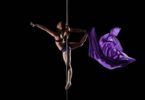Can dancing help with depression? If you or someone you know is struggling with this mental health condition, exploring alternative treatments can make a difference. While traditional methods like therapy and medication are often recommended, physical activities such as dancing, and specifically pole dancing, have emerged as innovative ways to alleviate symptoms of depression. This article explores how dance can improve mental health, boost confidence, and promote emotional well-being.
Understanding Depression: A Complex Mental Health Condition on the Rise
Depression has become a part of our lives due to the hum and drum of everyday life. Everyday harsh conditions and economic recession have made depression a common condition among many people.
However, there are distinctions between plain melancholy or sorrow, sadness, a bad mood, and actual depression. For a person to be diagnosed with depression, he should be evaluated in connection with cognitive, emotional, behavioral, and nervous symptoms for specific periods.
Depression constitutes a state of pathological sorrow accompanied by a noticeable loss of self-esteem and a painful slowdown of mental, psychokinetic, and organic procedures. It is usually combined with low self-esteem, self-pity, feelings of incapability, pessimism, despair, and even suicidal tendencies.
It is considered to be one of the most important sicknesses in the field of mental health and the Worldwide Health Foundation has announced that by the year 2020, it will be the No2 sickness on the list.
Depression and medication
Being under medication seems a convenient solution for those who suffer from depression. But is it effective enough or is it just a quick way of covering up the problem?
Is exercise the right medicine?
An alternative way that is healthier and more affordable to fight depression is exercising. It has been proven that people who do not engage in any or a limited form of exercise, have double chances of demonstrating symptoms of depression in comparison with people who exercise.
Moreover, it has been recorded that adults who trained for about 3 hours per week, showed a reduction in depression symptoms of about 27% in comparison with those who exercised less than an hour per week.
Numerous studies show that mild exercise is connected with less depression and stress and contributes to the improvement of mood and general well-being. An increase in the brain blood flow, changes in norepinephrine, dopamine, and serotonin, less muscle tension, increase in self-control, ability, and self-effectiveness are some of the reasons that justify the results mentioned above.
Can Dancing Help with Depression? Exploring the Emotional Benefits
So, can dancing help with depression? Numerous studies suggest that physical activity like dancing can reduce symptoms of stress and depression while improving mood and self-confidence
Engaging in aerial acrobatics and pole dancing offers a unique form of self-expression and liberation. The graceful movements and challenging techniques involved in these activities can help individuals reconnect with their bodies and regain a sense of control. By focusing on mastering new skills and routines, participants can experience a boost in self-esteem and a renewed sense of accomplishment.
Moreover, the rhythmic and fluid nature of aerial acrobatics and pole dancing can have a profound impact on one’s emotional well-being. The fusion of movement and music creates a powerful synergy that promotes relaxation, reduces stress, and uplifts the mood. The combination of physical exertion and artistic expression releases endorphins, known as the “feel-good” hormones, which can alleviate symptoms of depression and enhance overall mental well-being.
Furthermore, participating in these activities often involves joining a supportive and inclusive community. Connecting with like-minded individuals who share a passion for aerial arts and pole dancing can foster a sense of belonging and social support, which is essential for combating feelings of isolation or loneliness that often accompany depression. The encouragement and camaraderie within these communities can provide a valuable network of emotional support during challenging times.
In summary, aerial acrobatics and pole dancing offer a holistic approach to the treatment of depression. Through physical activity, artistic expression, and a supportive community, individuals can find solace, empowerment, and a renewed sense of purpose. It is important to explore and embrace alternative forms of therapy that cater to individual preferences and promote overall well-being.
Incorporating Dance into Your Routine to Manage Depression
Depression is a complex and multi-faceted sickness that can only be diagnosed by an expert who can prescribe medication only in severe cases. It is important to know that
- Psychological support
- Self-awareness procedure
- Exercise
There can be alternative forms of therapy with immediate and stable results. Holistic treatment and the right choice of an expert therapist are really important to get rid of the problem without any unwanted side effects.
How Dancing Improves Mental Health and Fights Depression
Why Dancing Reduces Depression Symptoms and Boosts Mood
By integrating pole dance into a comprehensive treatment approach for depression, individuals can harness the transformative power of movement, self-expression, and physical activity. Embrace the healing potential of pole dance and discover how it can uplift the spirit, boost self-esteem, and provide a supportive community for those seeking a holistic approach to managing depression.
Consultation with Healthcare Professionals and Therapists
Please note that while pole dancing can be a valuable tool for many individuals in managing their mental health, it is important to consult with a healthcare professional or therapist to determine the most suitable treatment options for your specific needs.
Can Dancing Help with Depression? Conclusion
In conclusion, can dancing help with depression? The answer is a resounding yes for many individuals. Through physical movement, emotional expression, and supportive communities, activities like pole dance provide a holistic way to manage depression and reclaim a positive outlook on life. By integrating dancing into your routine, you can experience improved mental health, boosted confidence, and a sense of empowerment.
References: -Dunn, A. L., Trivedi, M. H., Kampert, B. J., Clark, C. G., & Chambliss, H. O. (2005). Exercise treatment for depression. Efficacy and dose response. American Journal Prenentive Medicine, 28, 1-8. -Martinsen, E.W. (2008). Physical activity in the prevention and treatment of anxiety and depression. Nordic Journal of Psychiatry, 62, 25-29. -Mather, A. S., Rodriguez C., Guthrie F. M., McHarg, A. M., Reid, C. I., & McMurdo, E. M. (2002). Effects of exercise on depressive symptoms in older adults with poorly responsive depressive disorders. Brain Journal Psychiatry, 180, 411-415.







